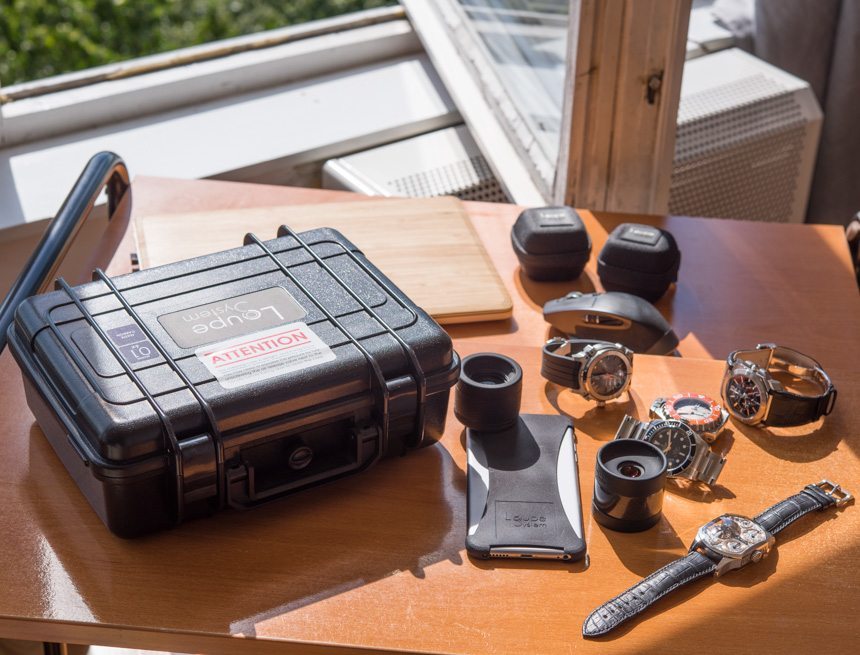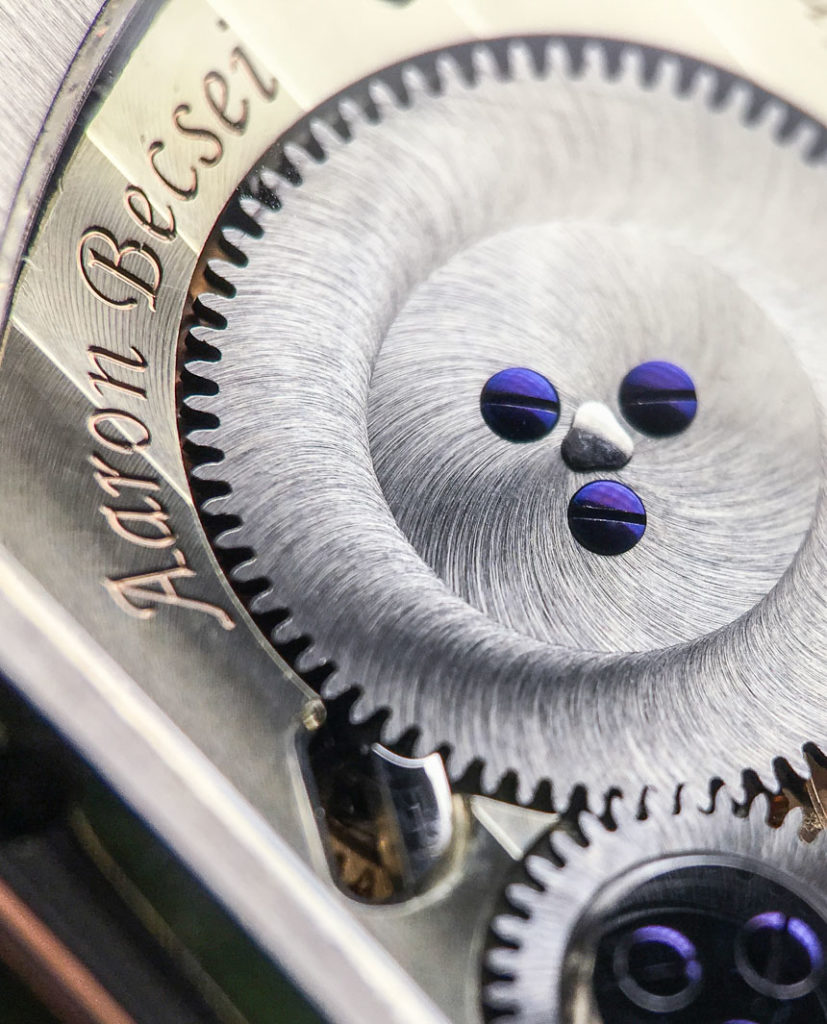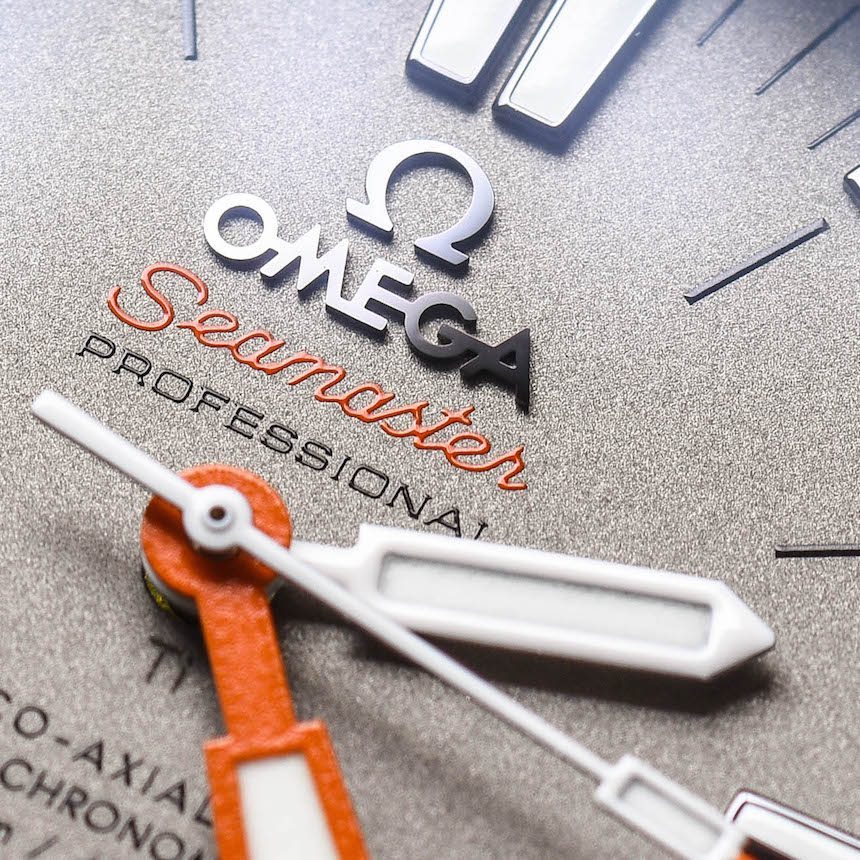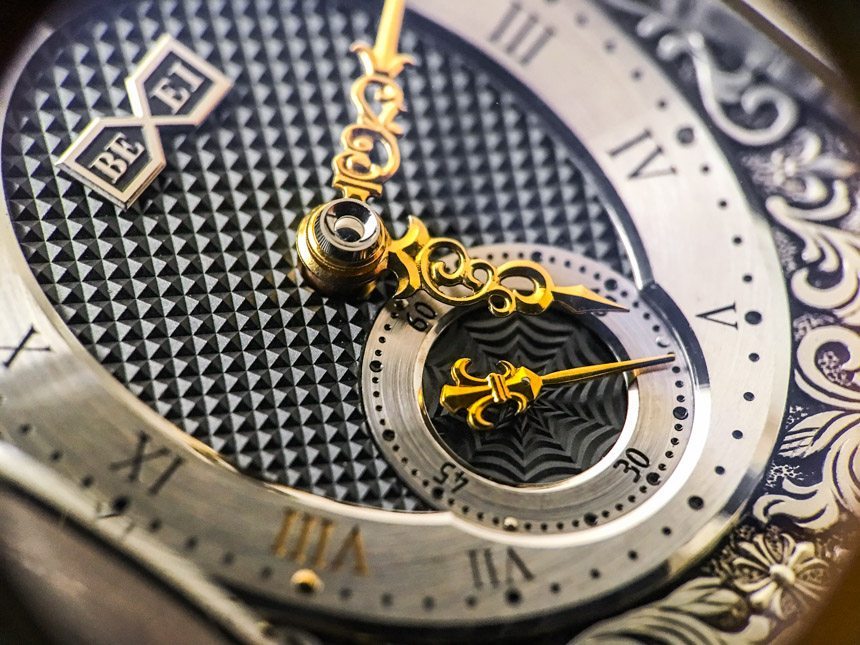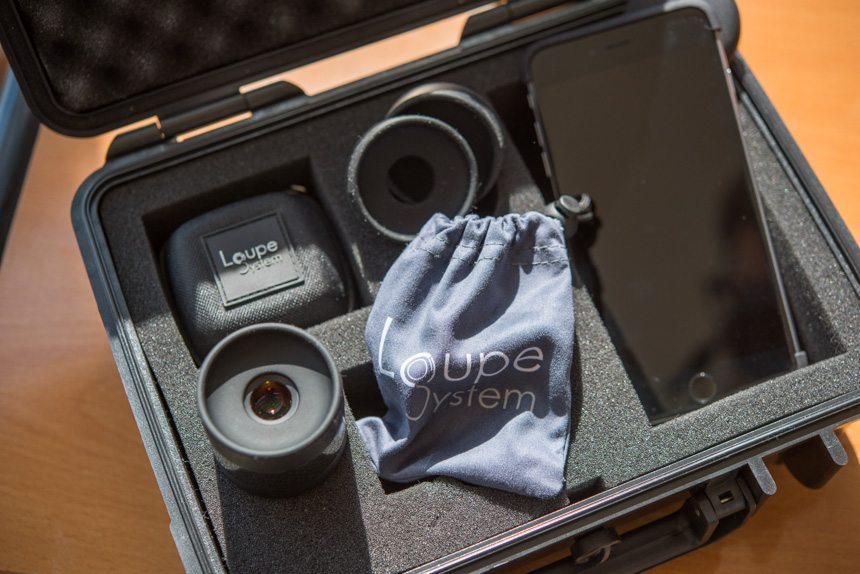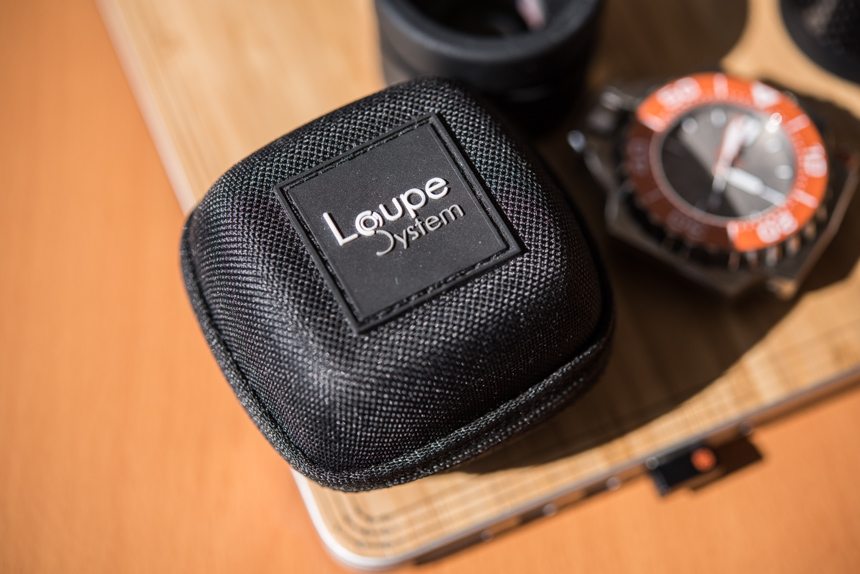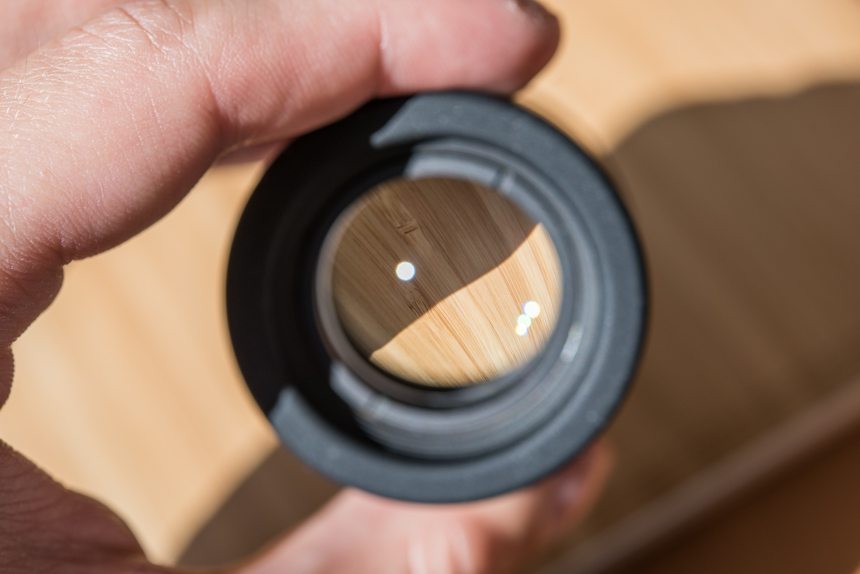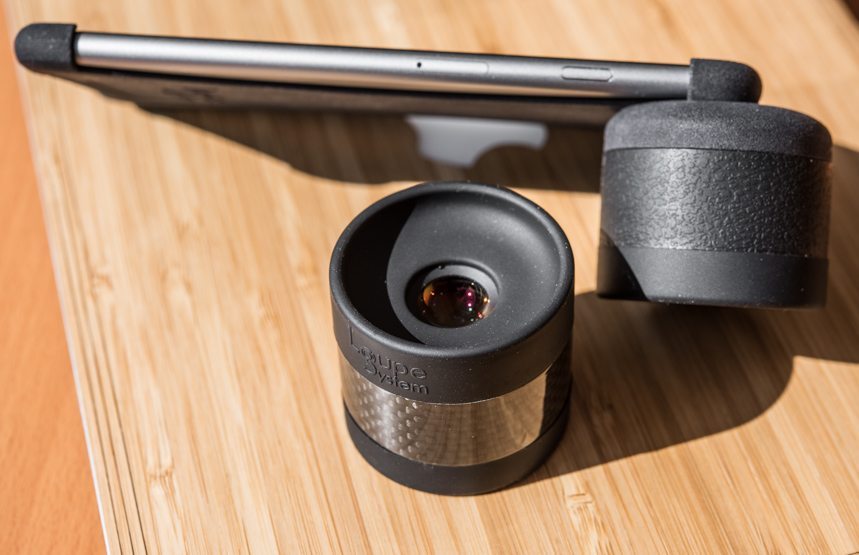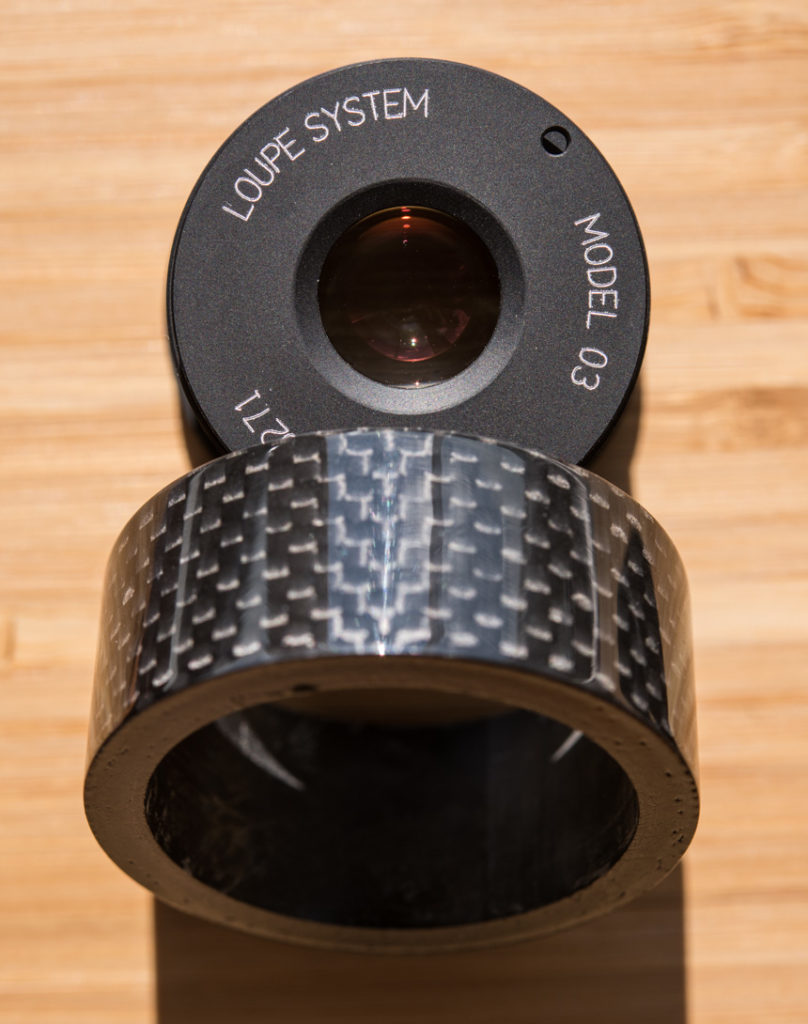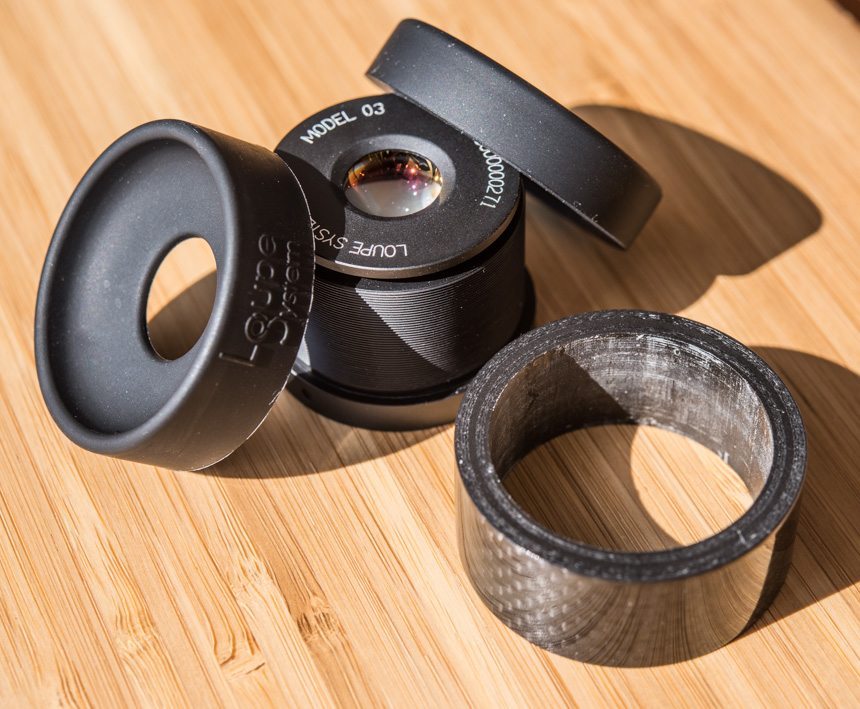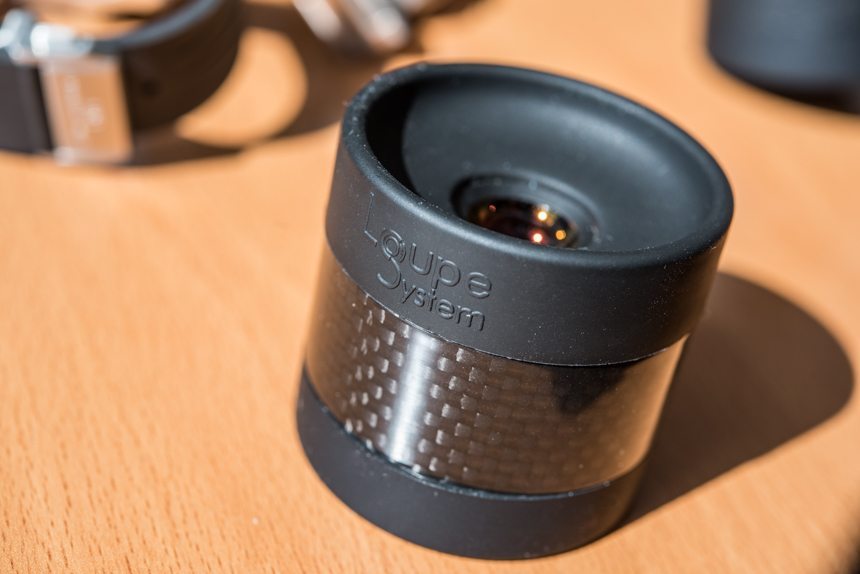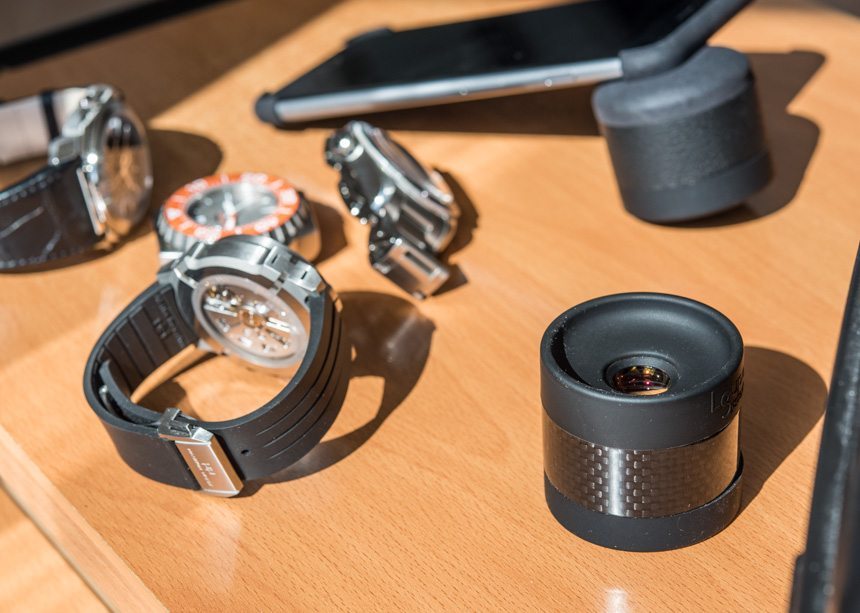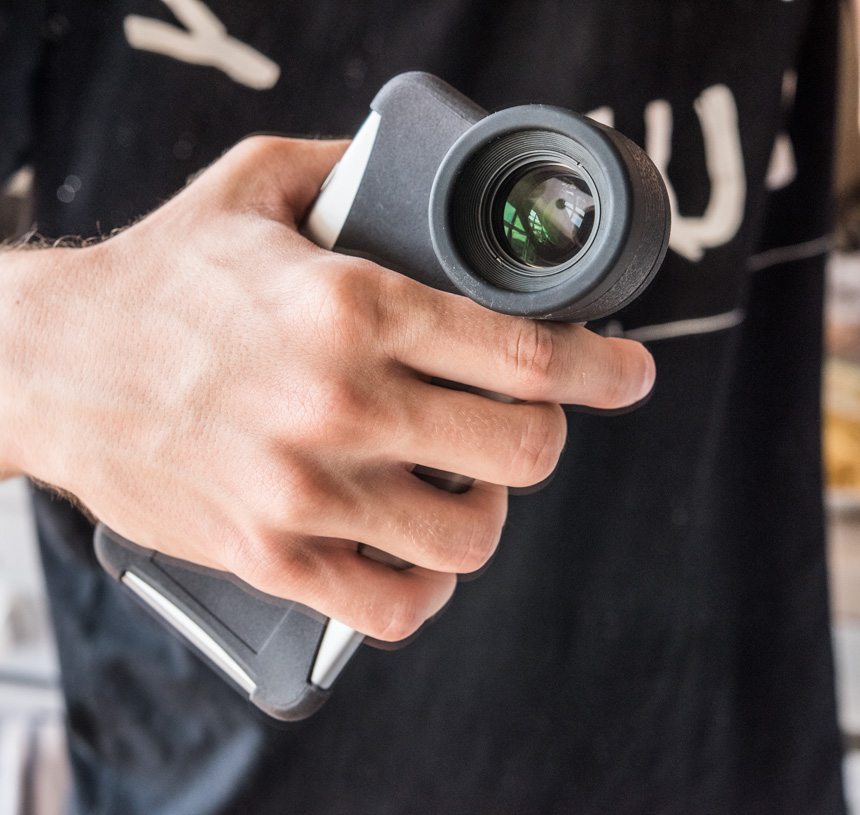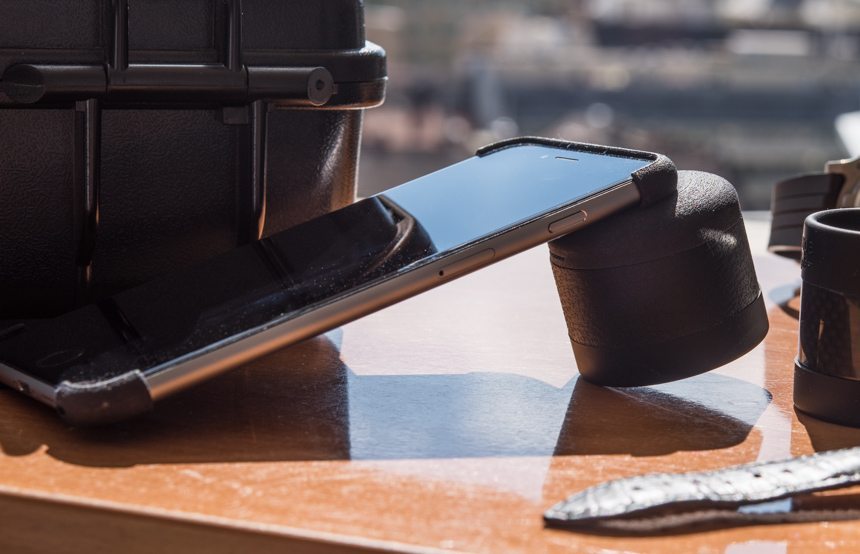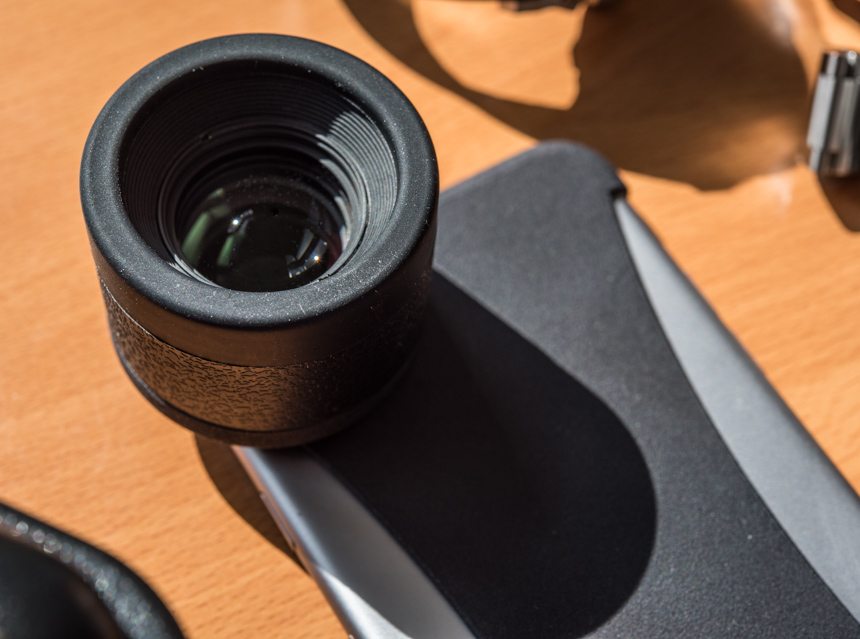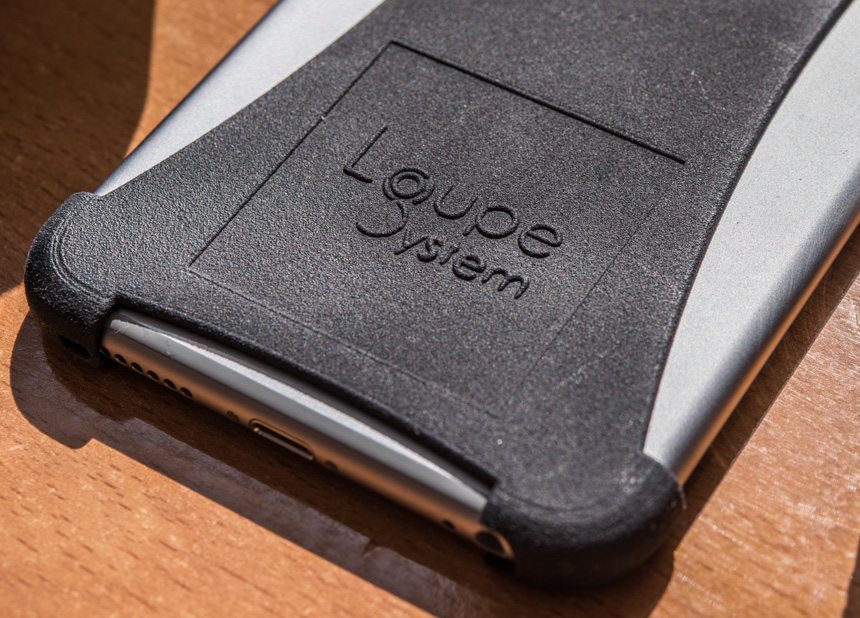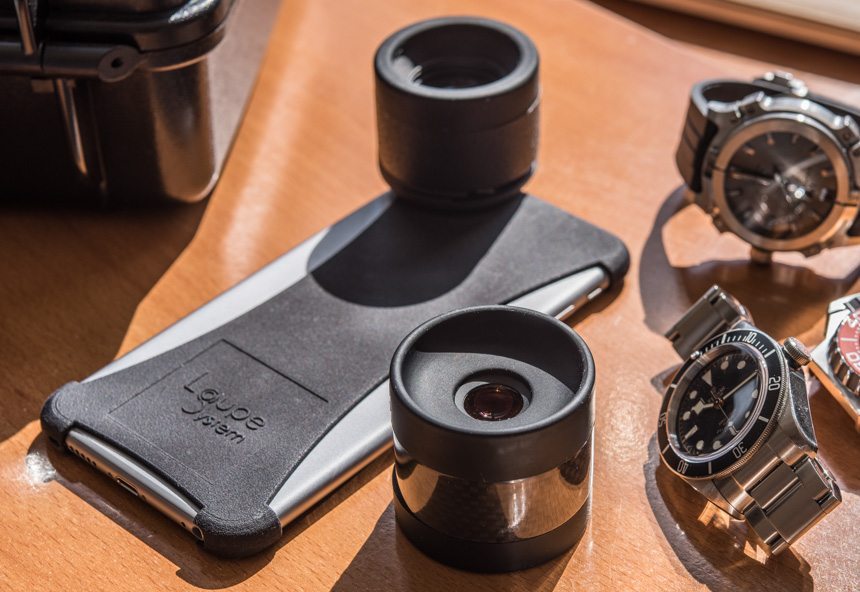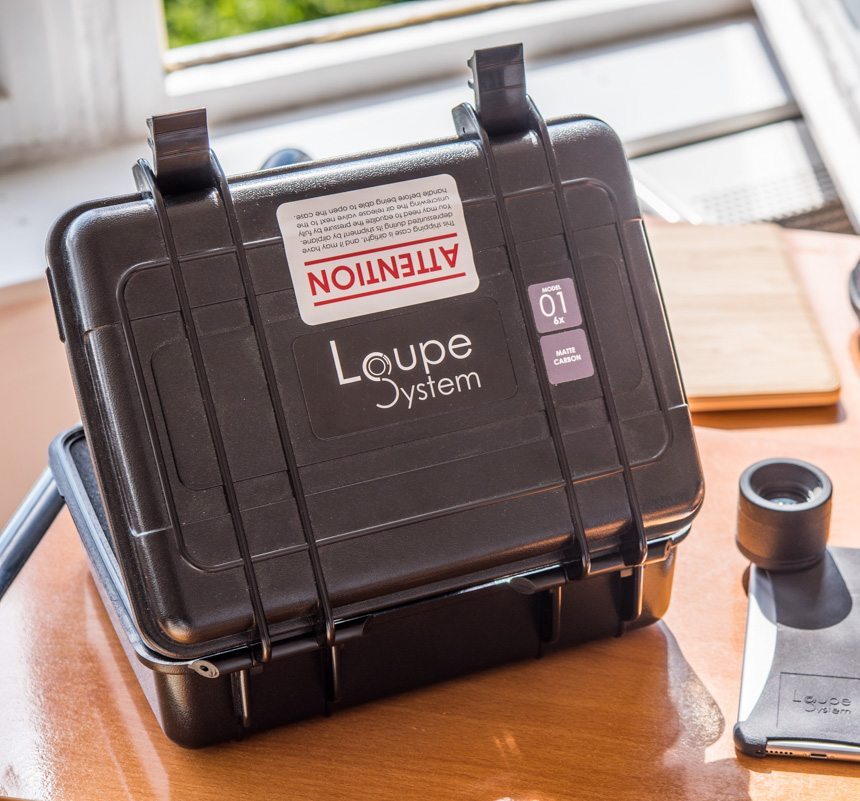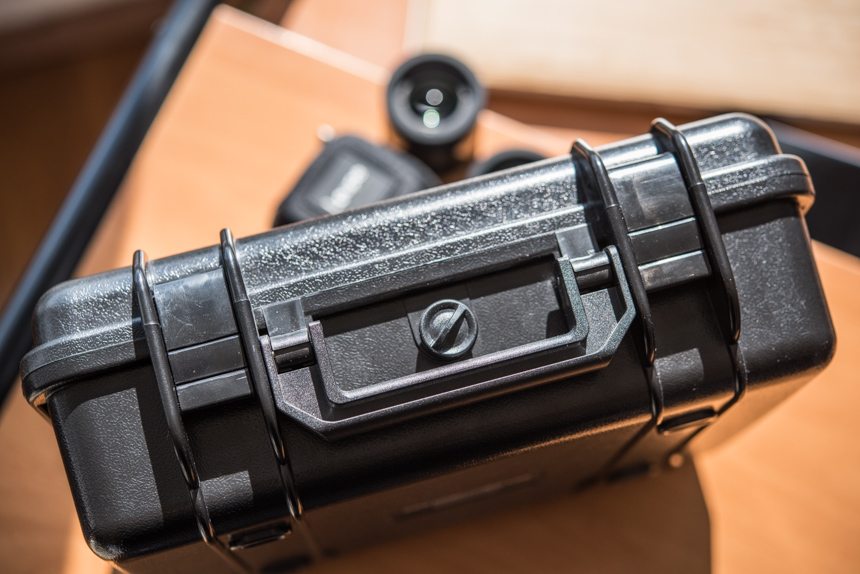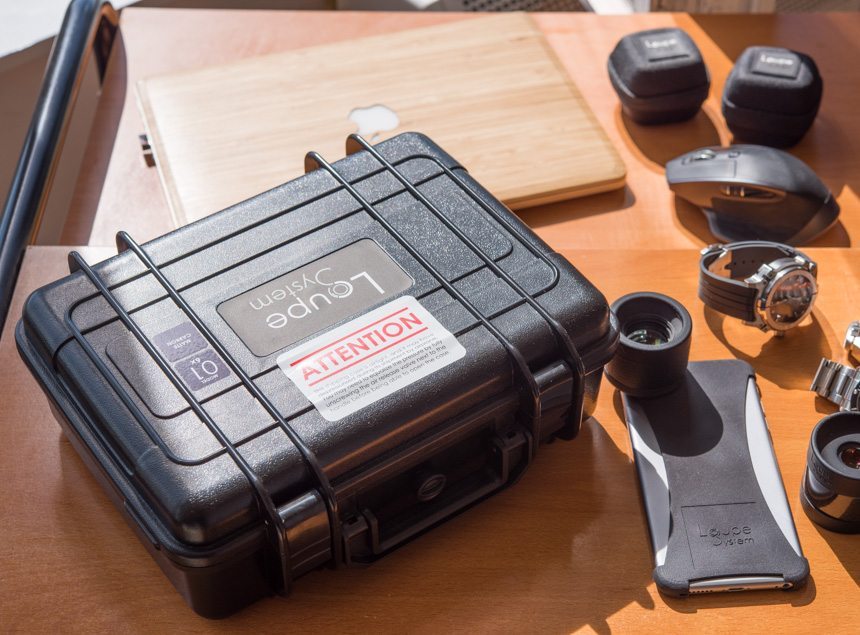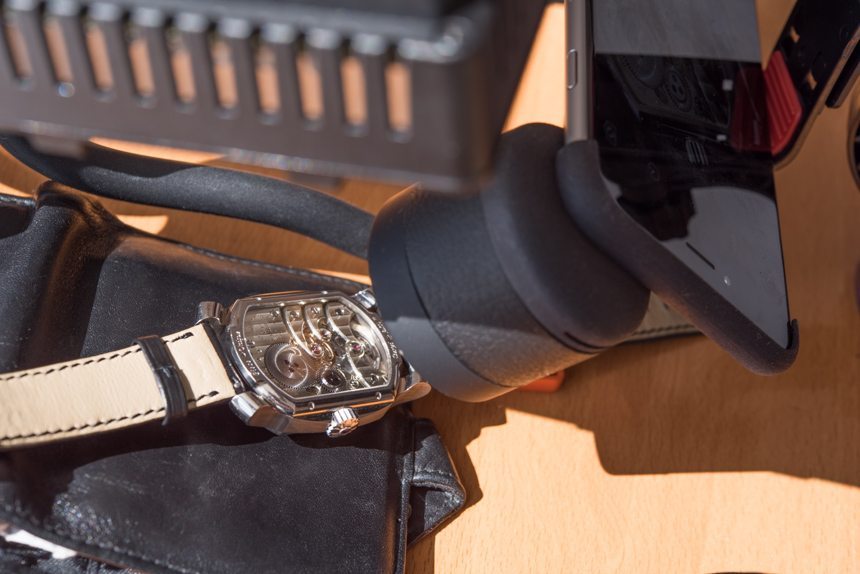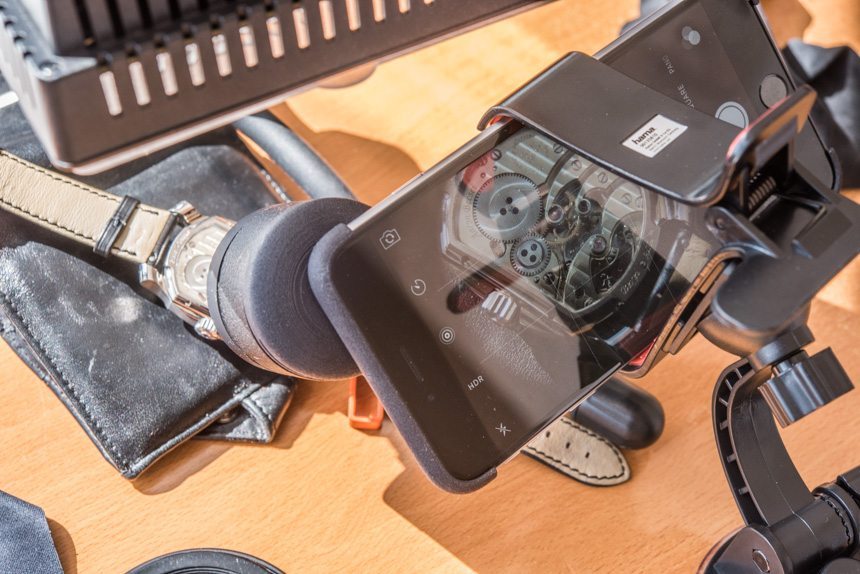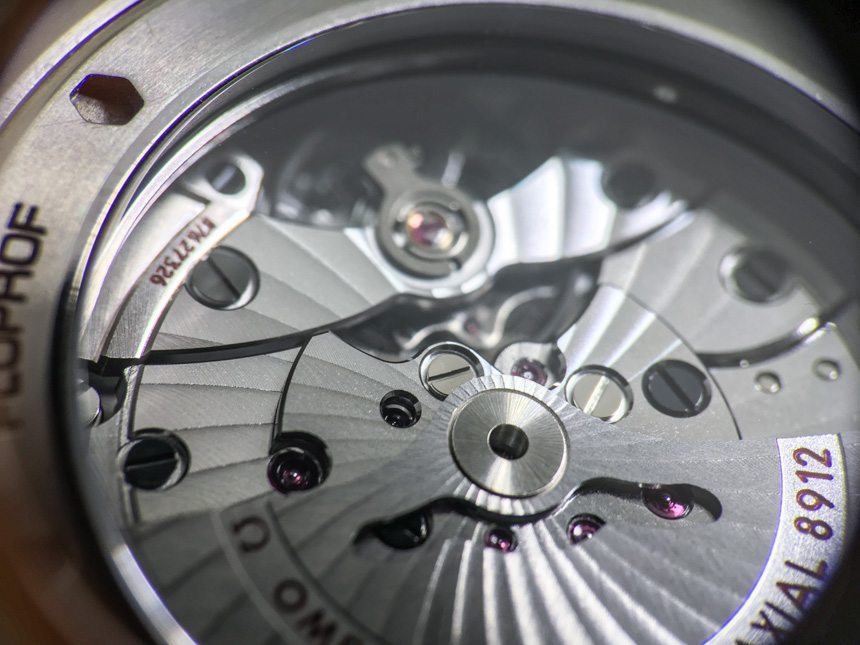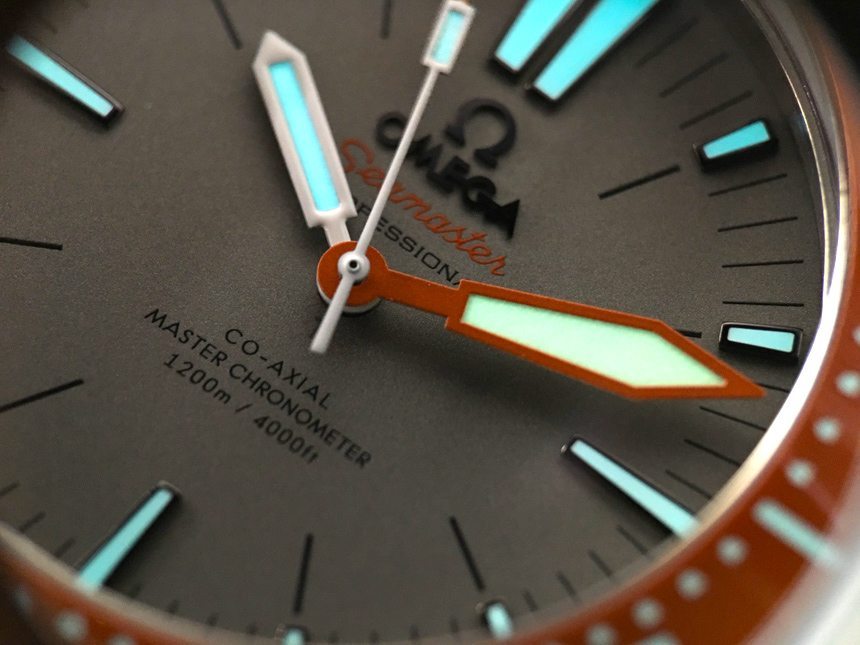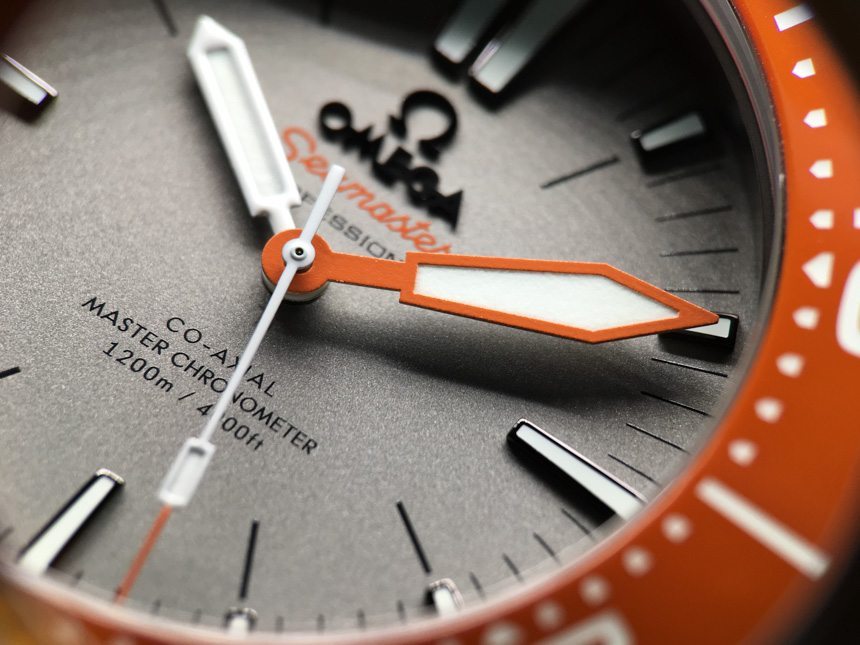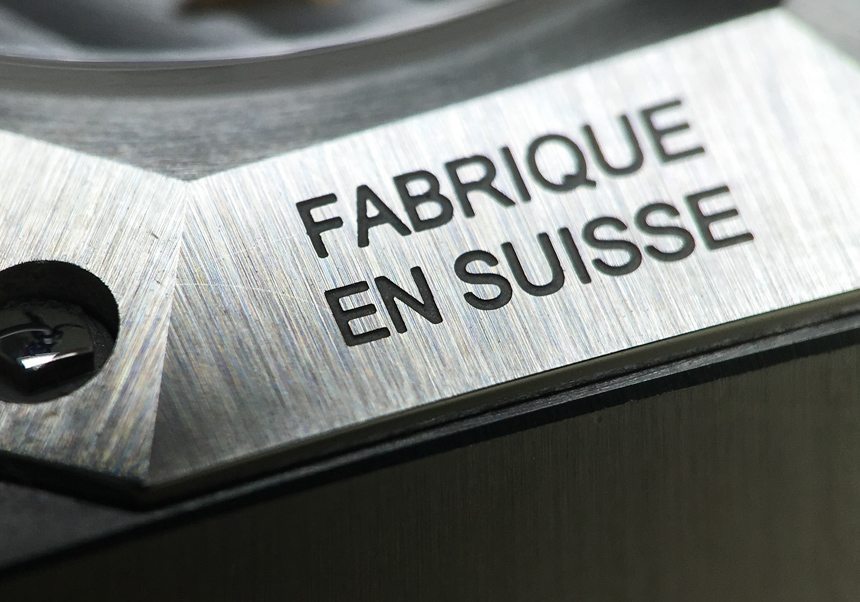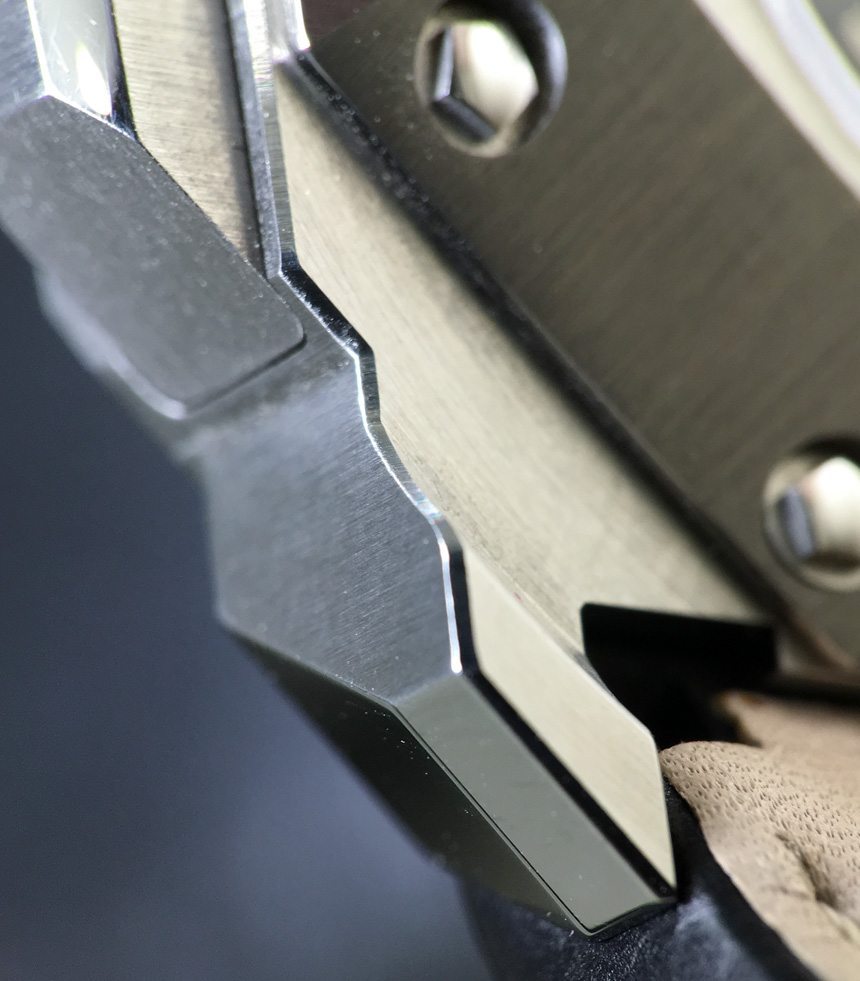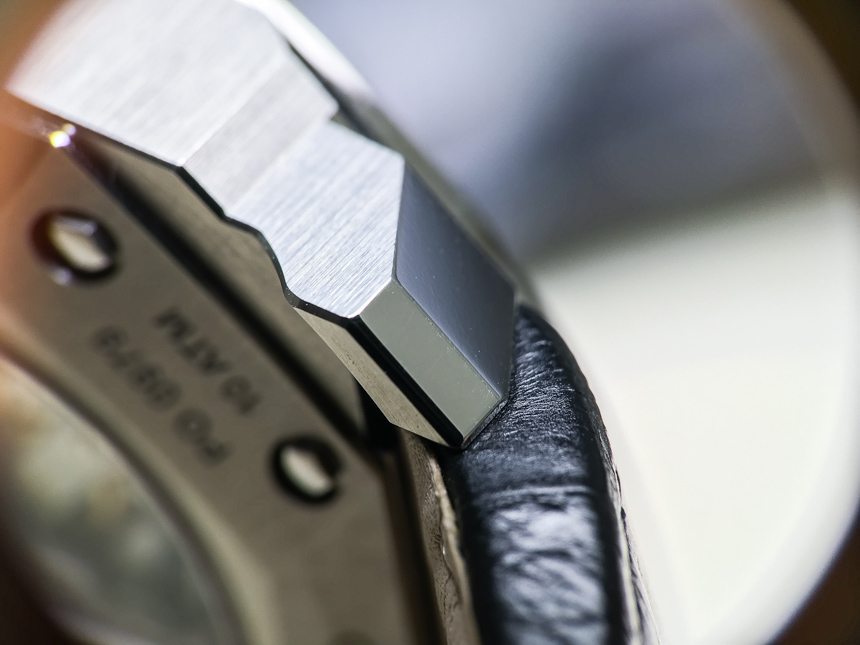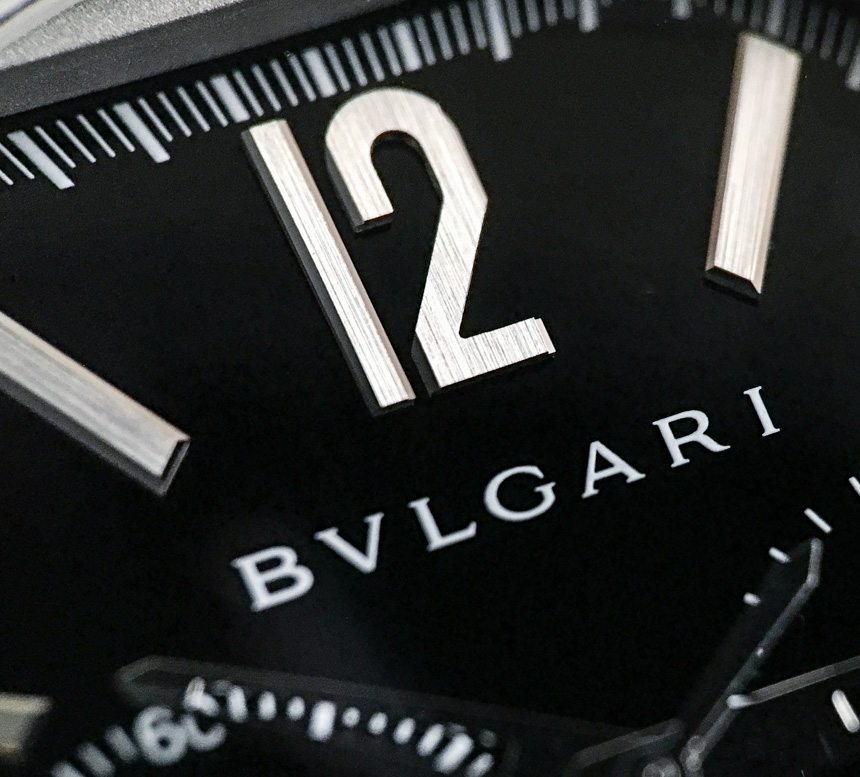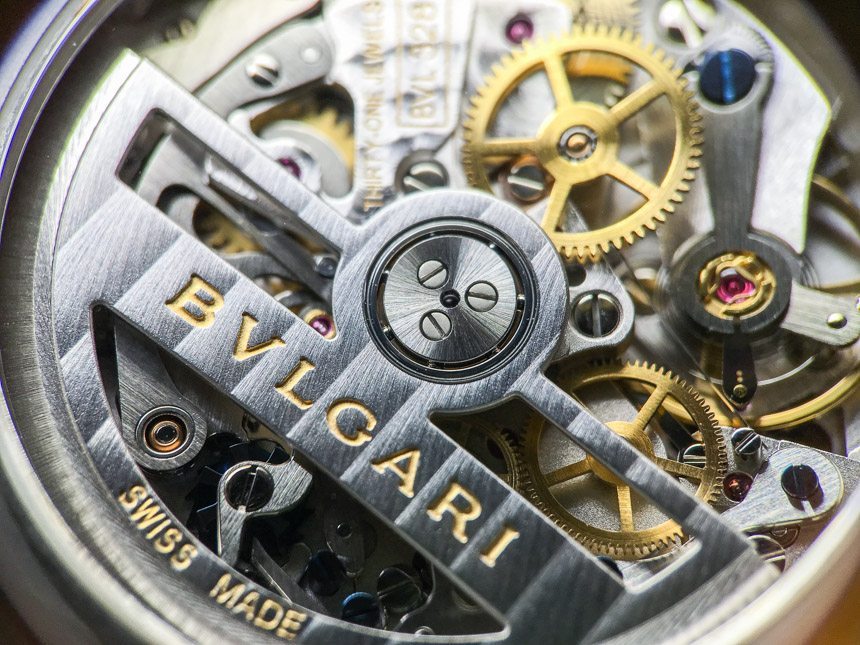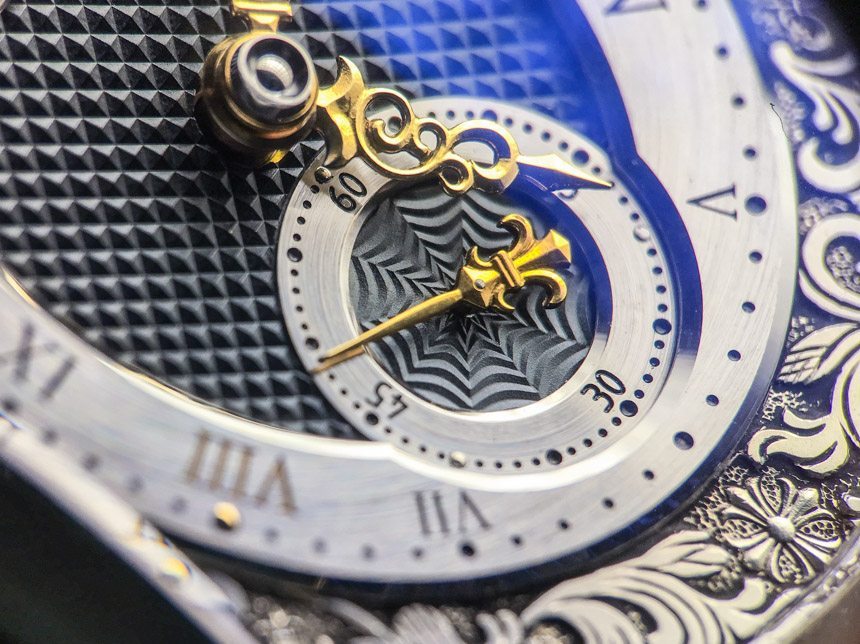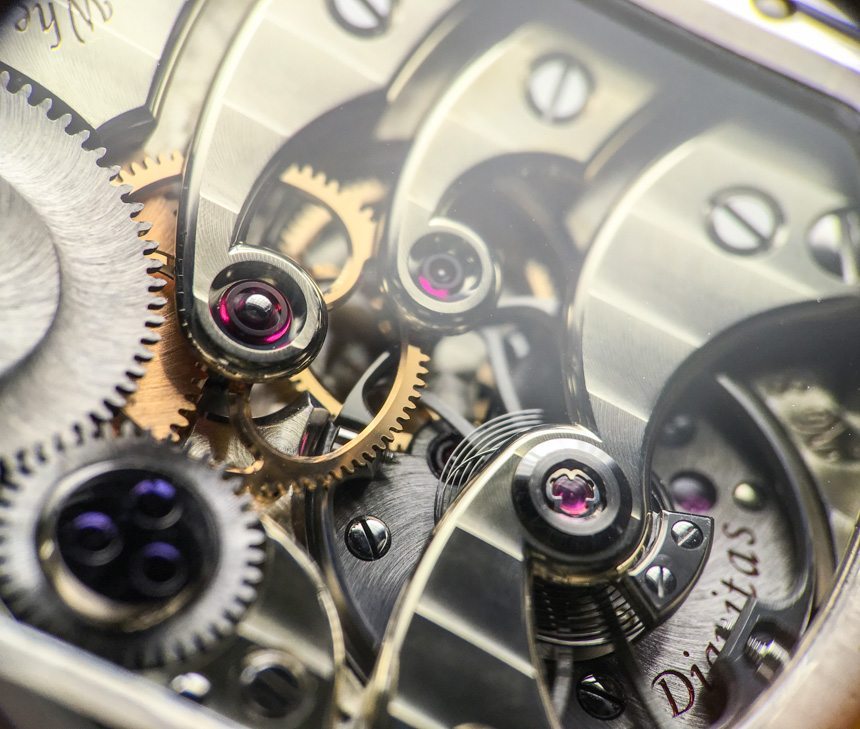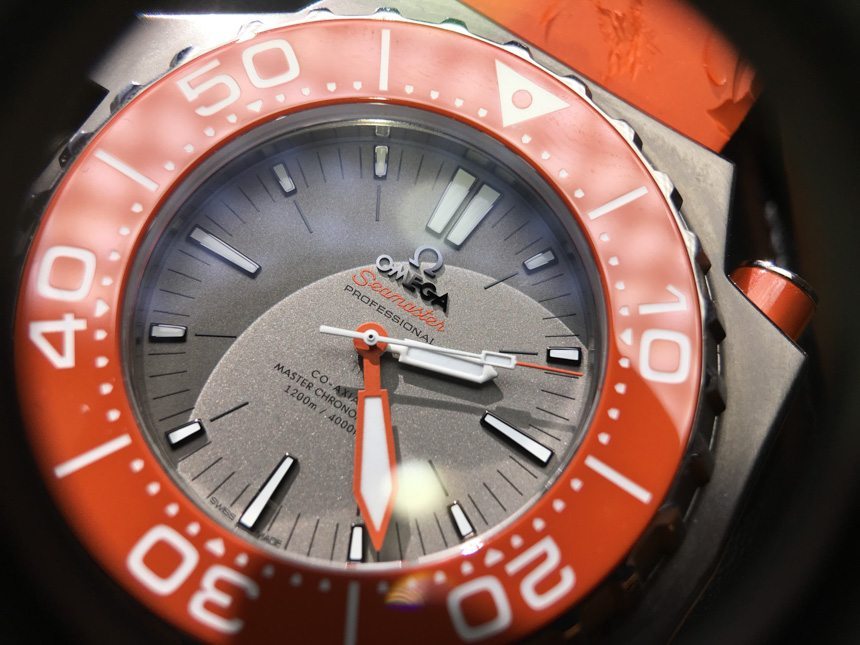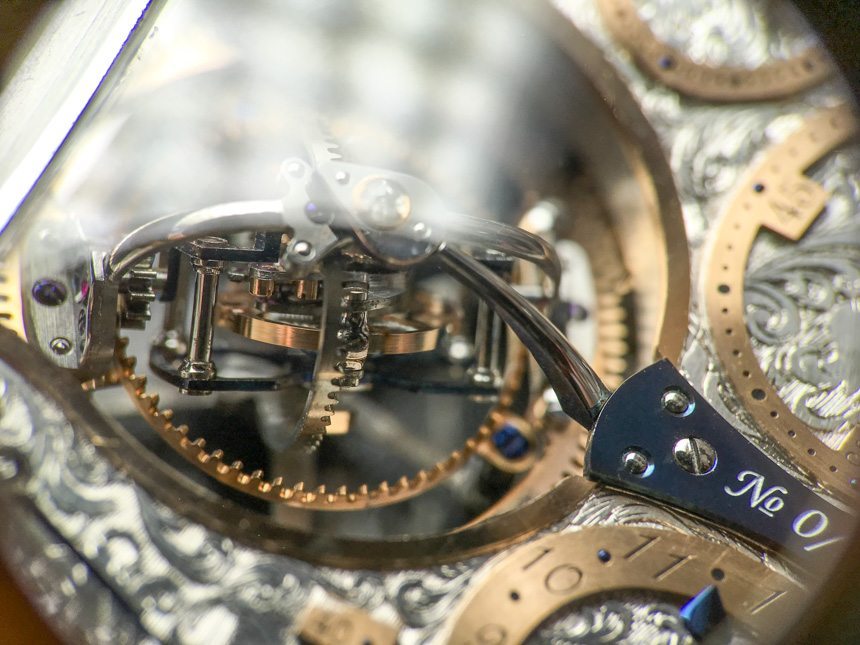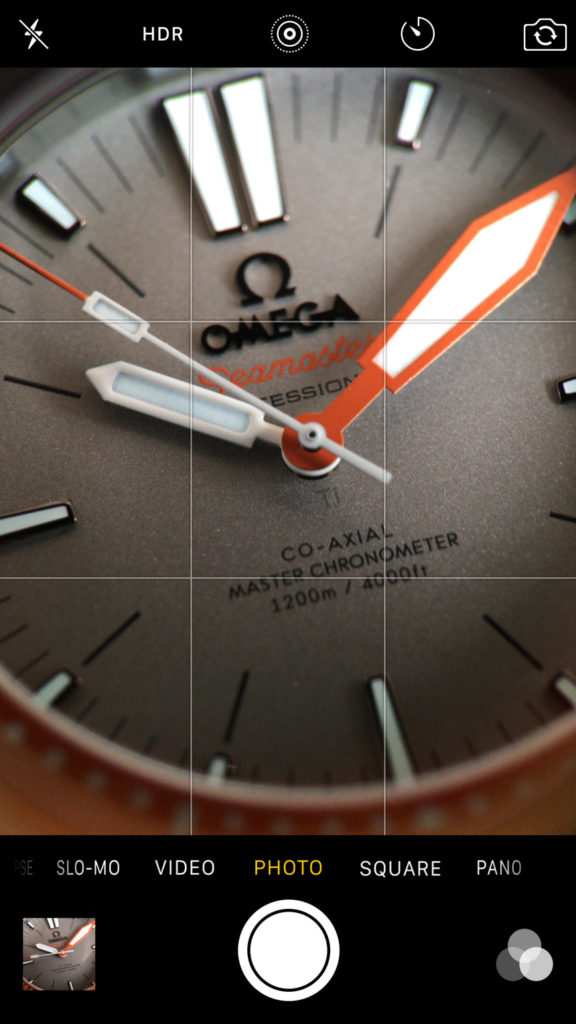
What you see above is what you get with the 10x magnification loupe mounted. It fills up the entire picture beautifully, but then again, it forces you to get extremely close to the subject. When photographing the Ploprof – our stunning model for this specific shot – at a slight angle, because it has such a thick front crystal, you have to more or less touch the rubber outer edge of the loupe to the crystal to get what’s underneath it in focus. That is how short the focusing distance is.
This extremely short focusing distance of the 10x lens creates another issue, that of getting a sufficient amount of light in that tiny space between the loupe and the subject. In bright sunlight this is far from ideal, your best bet is to get in a room that has lots of artificial lighting, with ample amounts of “soft,” scattered light that can find its way in there. This way, you get minimized reflections and abundant light to take the picture or video.
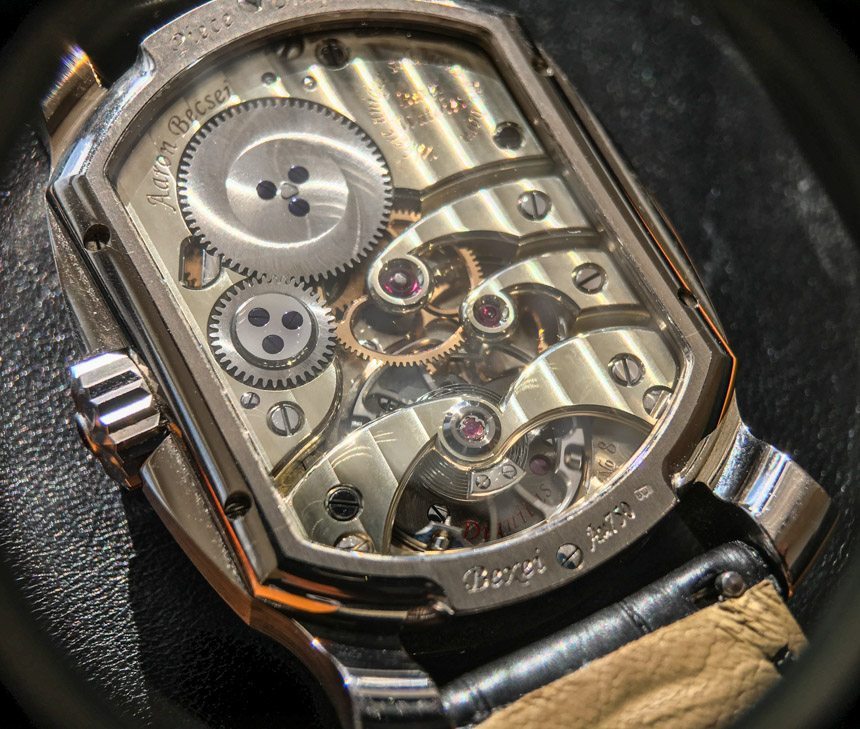
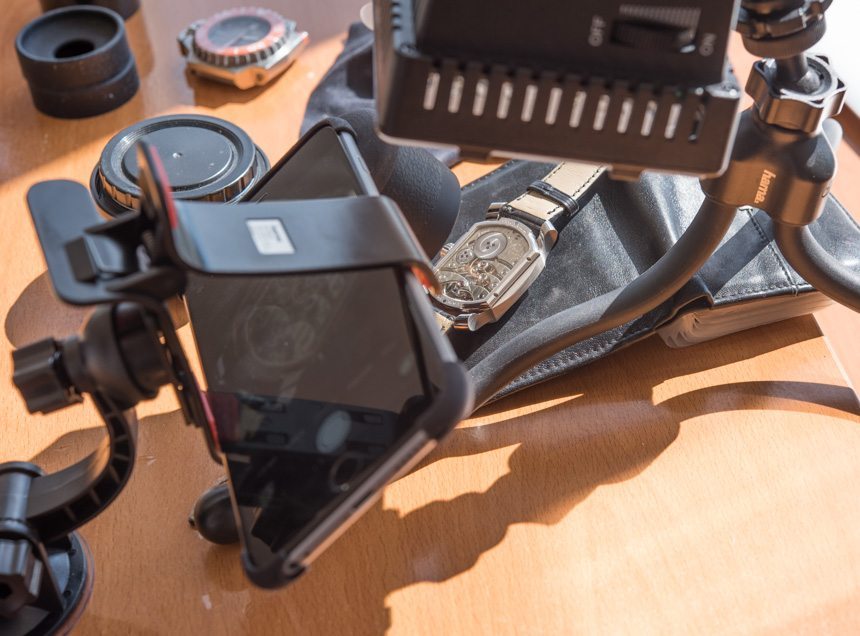
Get an iPhone holder, some basic lighting, and you’re all set. Image above taken with the 3x Loupe, note the reflections on the movement and case-back because of unfavorable light.
Speaking of lighting, Loupe System has developed and is now selling an additional LED light ring that goes around the subject-end of the loupes, allowing you to get more light to where you need it most: on what you’re taking pictures of. Priced at $300, it is a costly addition, but one you may want to consider getting if you don’t want to always spend time on fiddling with whatever light options you have at any given moment. If you go for any one of the silicone rubber wrapped loupes and the LED ring pre-installed, price is $775.
The 10x lens, as noted above, suffers from more noticeable distortion. In photographs, it shows how it is quite sharp in the center but gets really quite soft in the corners, with more color aberrations being present in those extreme areas as well. It, nevertheless, is capable of producing fantastic images, the kind of stuff that will surely make all your fellow watch lovers envy your watch – and your photography skills, if you manage to get the lighting right. The image taken above was one I took with the iPhone 6S Plus and the 10x magnification Loupe System, which I ended up cropping into: from the 12 Megapixel original file I created a 3.5 Megapixel image.
How good is it when compared to, say, a “proper camera?” To find out, I took out my Nikon D810 with the 85mm PC-E Micro Nikkor lens, a setup that retails for north of $5,200. Because the Nikon lens’ reproduction ratio is a mere 1:2, compared to the 10:1 of the loupe, I couldn’t get nearly as close to the subject as I wanted to, and had to crop heavily into the DSLR image.
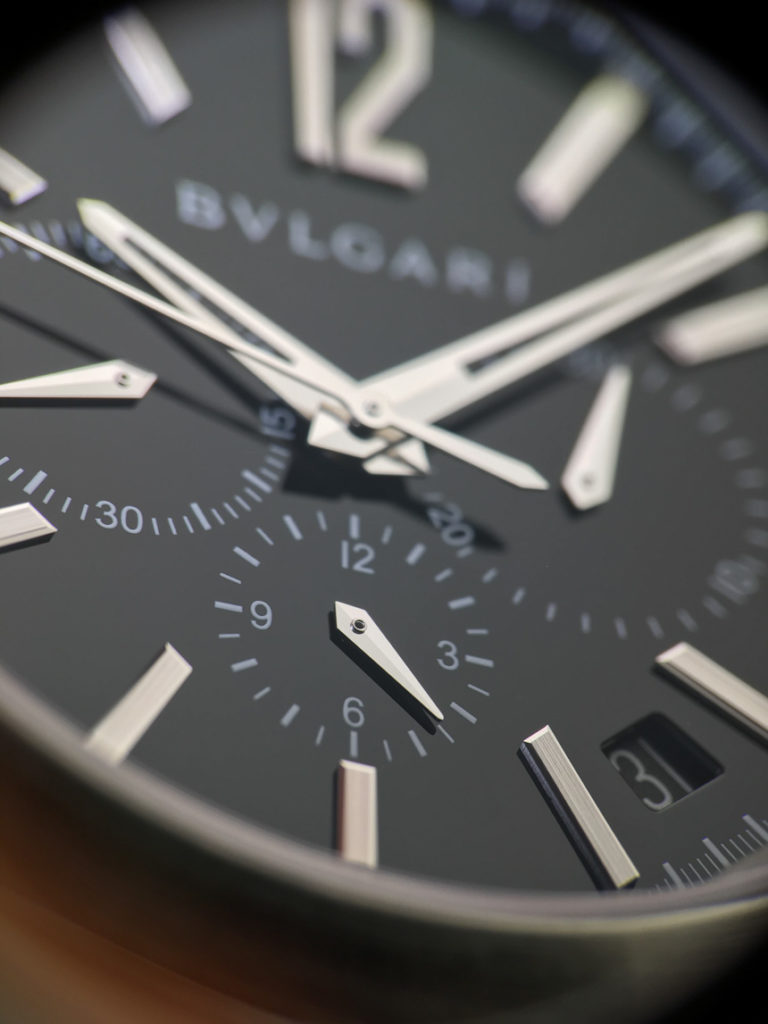
The sleek dial of the Bulgari Octo Velocissimo looking rather monumental from this angle. 10x Loupe.
Ultimately, I could replicate the Loupe System + iPhone 6S Plus image and, as you would expect, the Nikon did do better when it comes to fine detail, even if I did have to crop very heavily into the image. While the iPhone image’s resolution remained 3.5 Megapixels after cropping, the 36 Megapixel file from the D810, because of the extreme closeup required and the long focusing distance, ended up being 1.6 Megapixels.
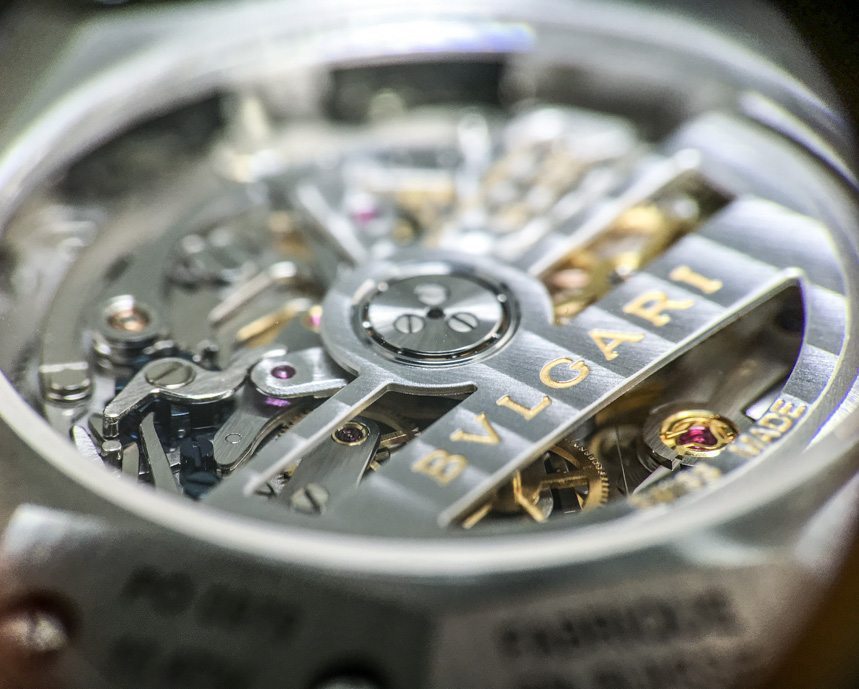
And while we are comparing 3.5 to 1.6 Megapixels, the Nikon still is considerably sharper at 100% crop and at a much greater area (thanks to the f13 aperture that I set), has much better dynamic range, and incomparably more eye-pleasing falloff (bokeh) in the out-of-focus areas. Goes to show that resolution is not everything.
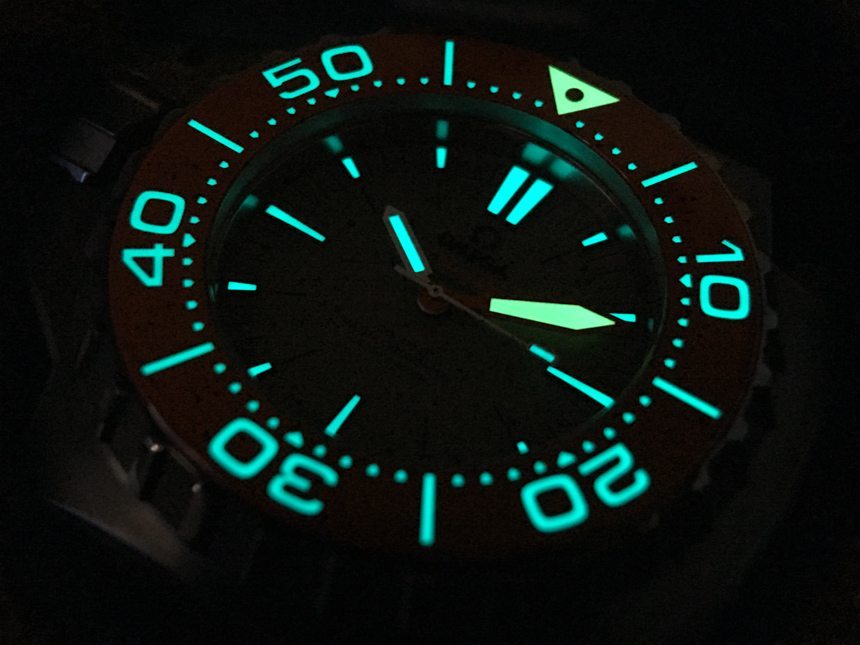
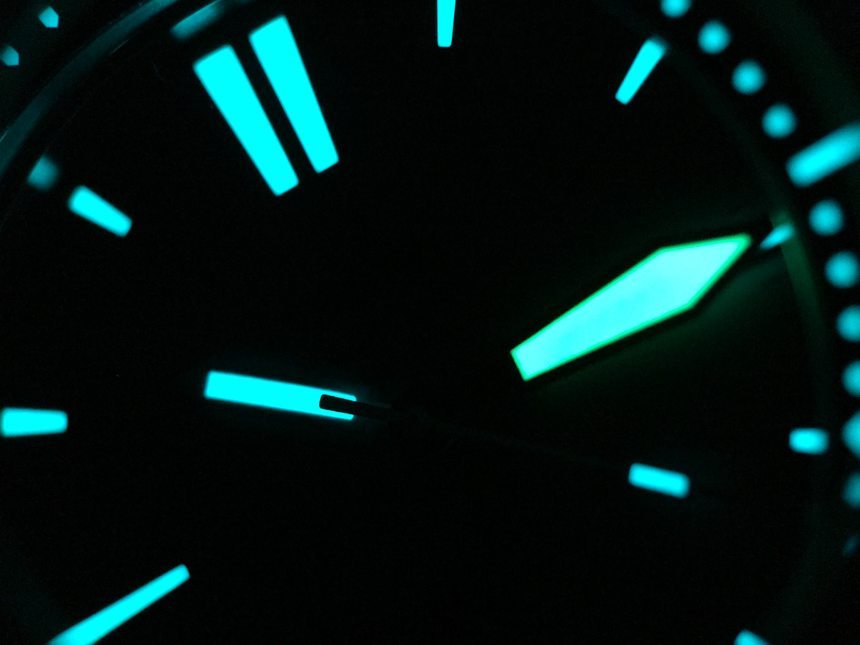
Lume shots taken with the 3x and 10x Loupes on the iPhone – minor editing was required to get rid of the noise
Yet, with all this in mind, the Nikon required a tripod, a lot of setting up and adjustments, using a manual mode and absolutely spot-on focus (which is only manually adjustable on this 85mm PC-E lens). Add to that the inconvenience of getting the large files out of the camera, cropping them, exporting, and getting them on your phone, only to finally be able to share them via social media such as Instagram.
Compare that to tapping the screen and the shutter button a few times after finding the right angle and lighting with the iPhone. Once I had the image, I opened the Instagram app, made some minor adjustments (keep your filters for hungover selfies and unattractive images of food) and posted it right away.
To be fair, you can get a lot closer with the 85mm with some extension tubes, and at that point you’ll get images that will be worthy of other uses that go beyond social media posts – you can more beautifully edit them and then have them printed in larger sizes while, to be frank, no smartphone picture taken today can possibly be printed and look even remotely as good at comparable sizes.
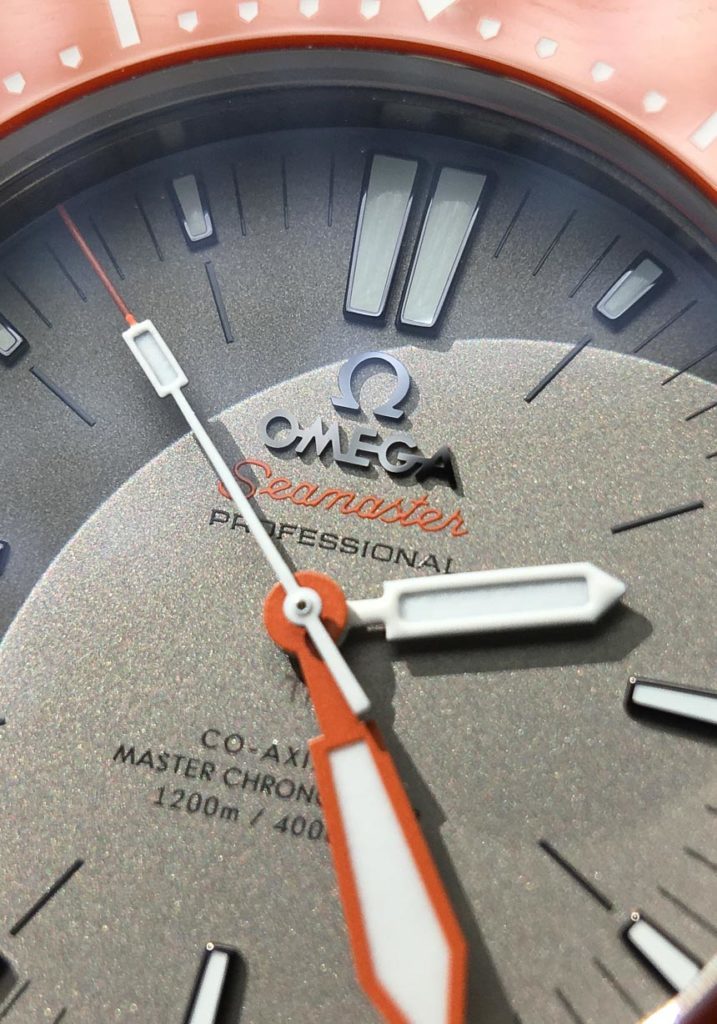
We could slip deeper into the infinite depths of nerding-the-heck-out over photography, but the point to be made here is that the Loupe System works well enough to come very close to what you can get out of a high-end DSLR setup unless you go pixel-peeping… and with the added convenience and the imaginable use scenarios – again, sharing on social media and/or with friends or clients – the Loupe System really is all the tool you need.
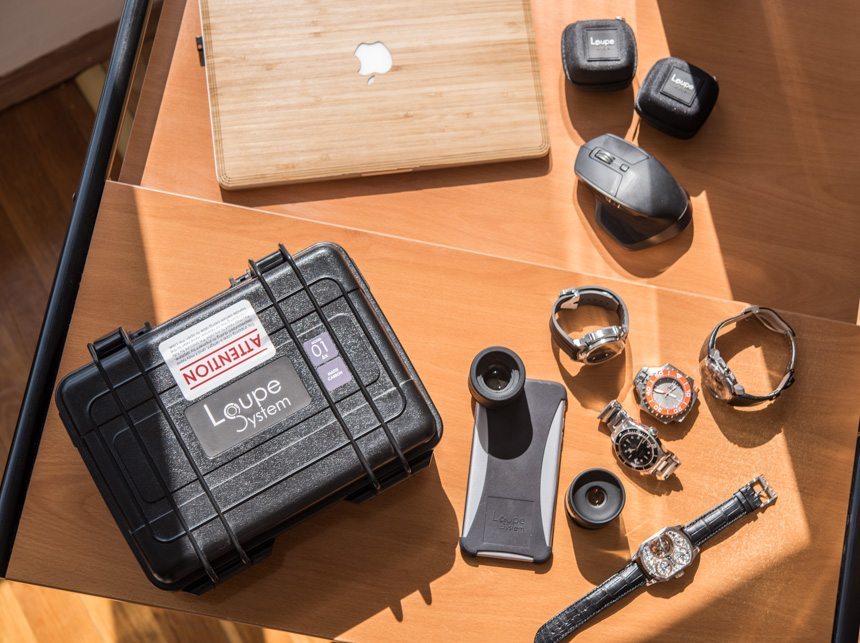
Conclusion
With prices starting at $525 and with additional accessories costing a considerable amount as well, the Loupe System is not a low-budget option to bring your watch appreciation to a new level. It is a premium product with premium pricing to go with it, and once you compare this outlay to the prices luxury watches are commanding nowadays, you end up spending not a negligible, but still a reasonable amount. What you get in return is a new dimension opening up, as you do get to see watches in a way you would never ever be able to with the naked eye – and only with much greater struggle and expertise when using a DSLR setup. Portable, well-made, and sporting impressive optical performance, the Loupe System is a pricey watch accessory that we can highly recommend to those wanting to get a better look at what they’ve been wearing all these years. loupesystem.com

